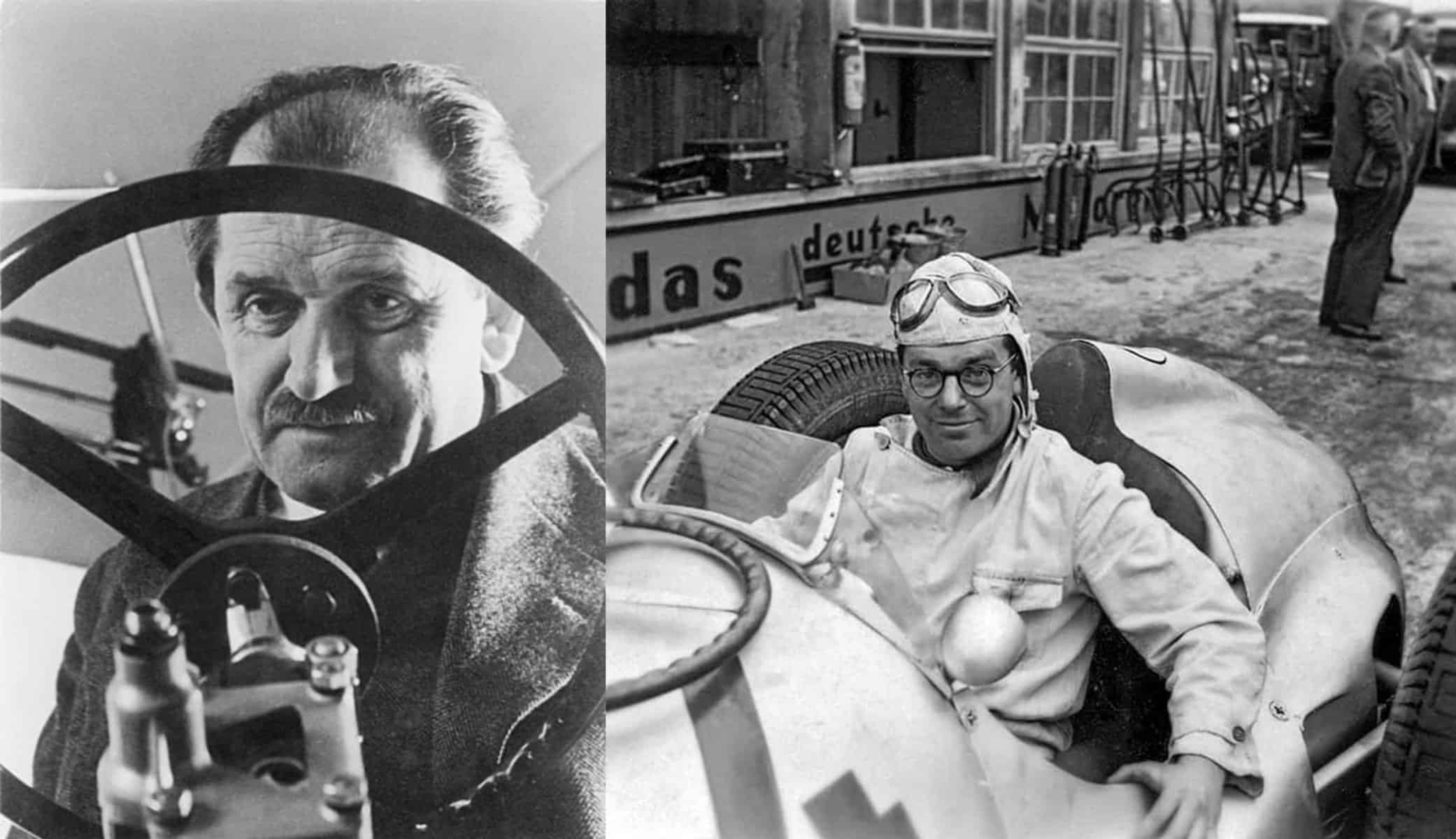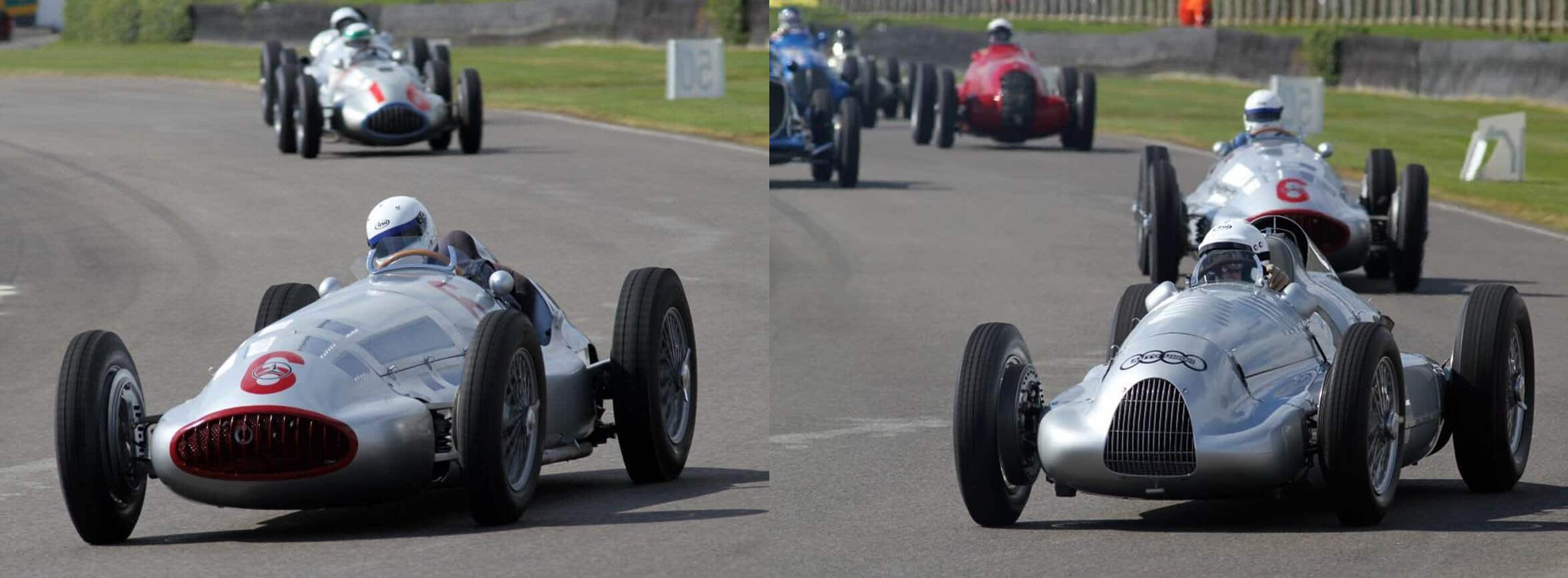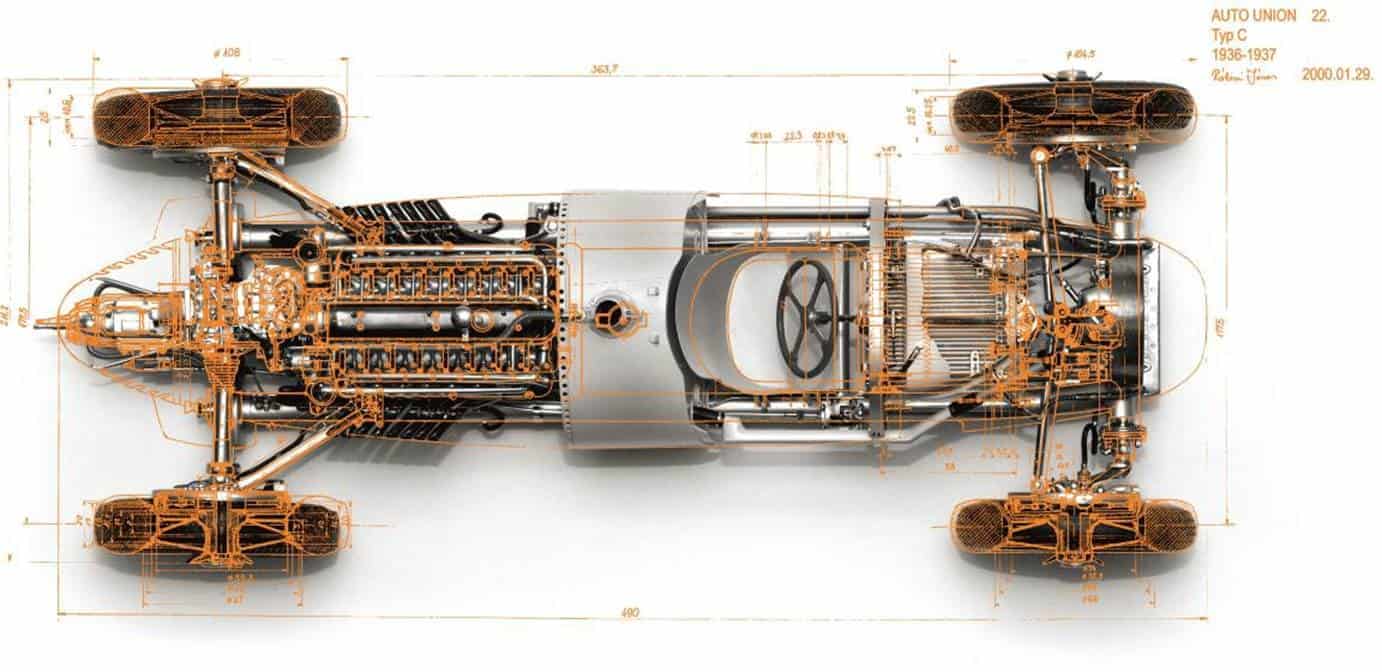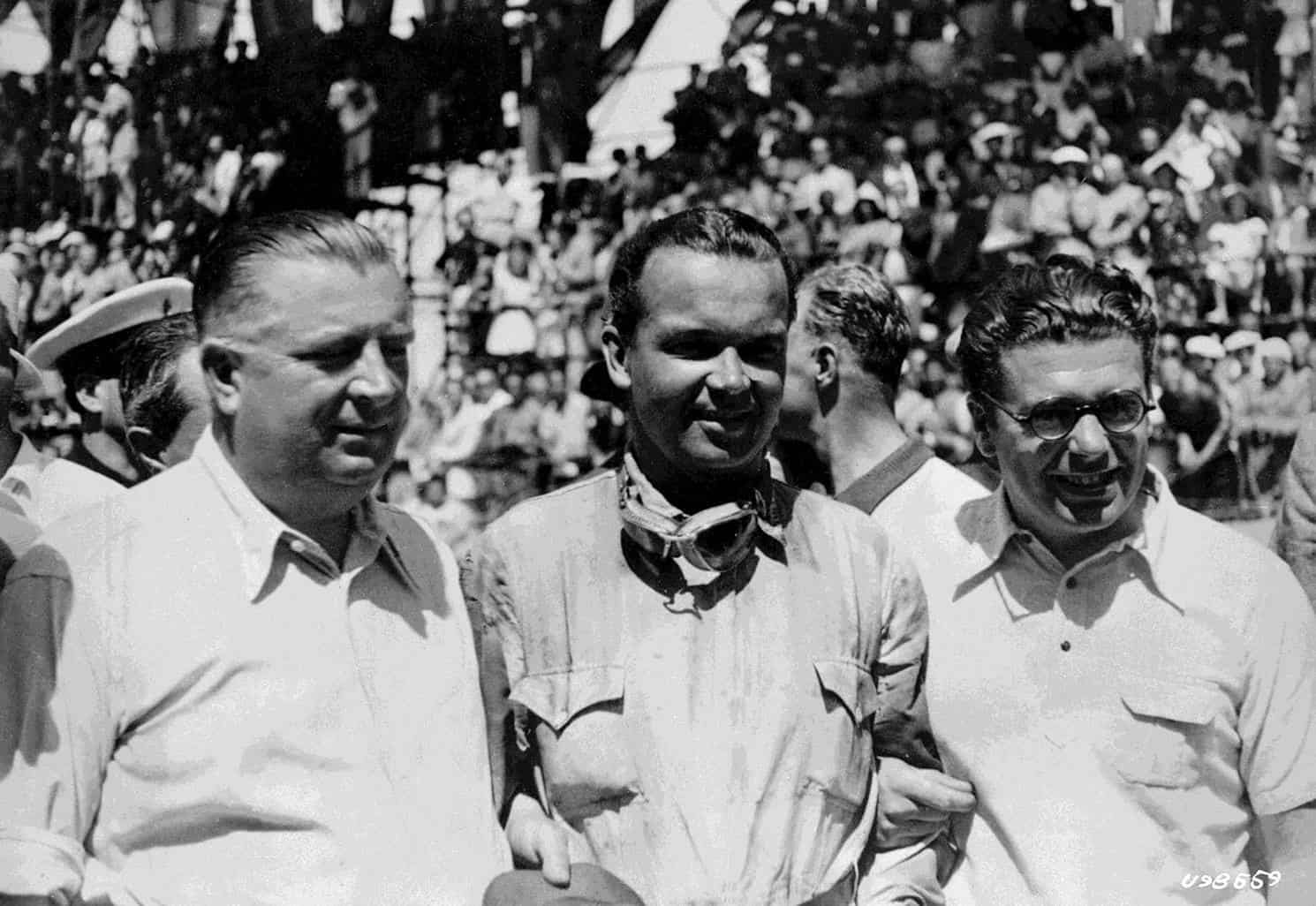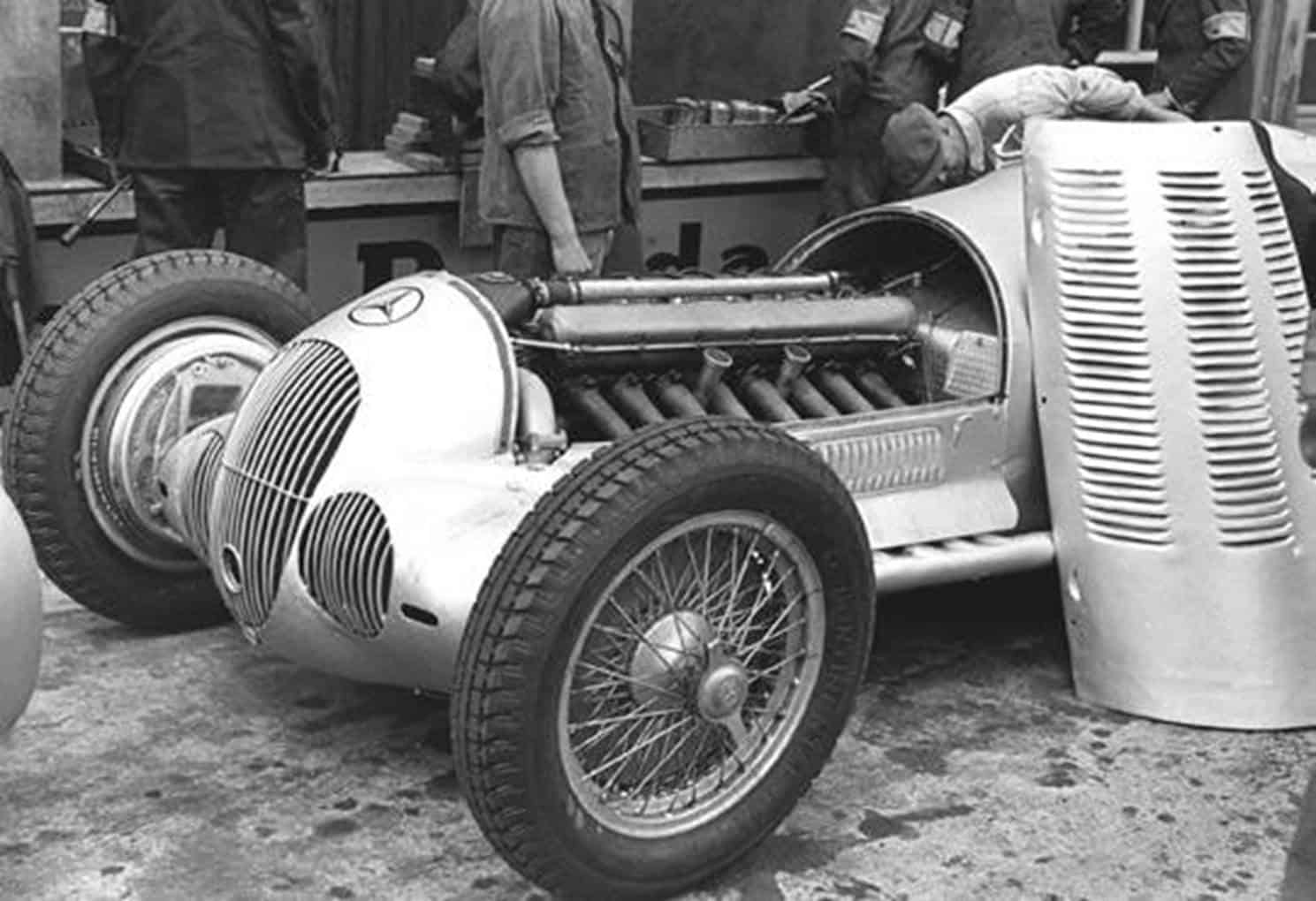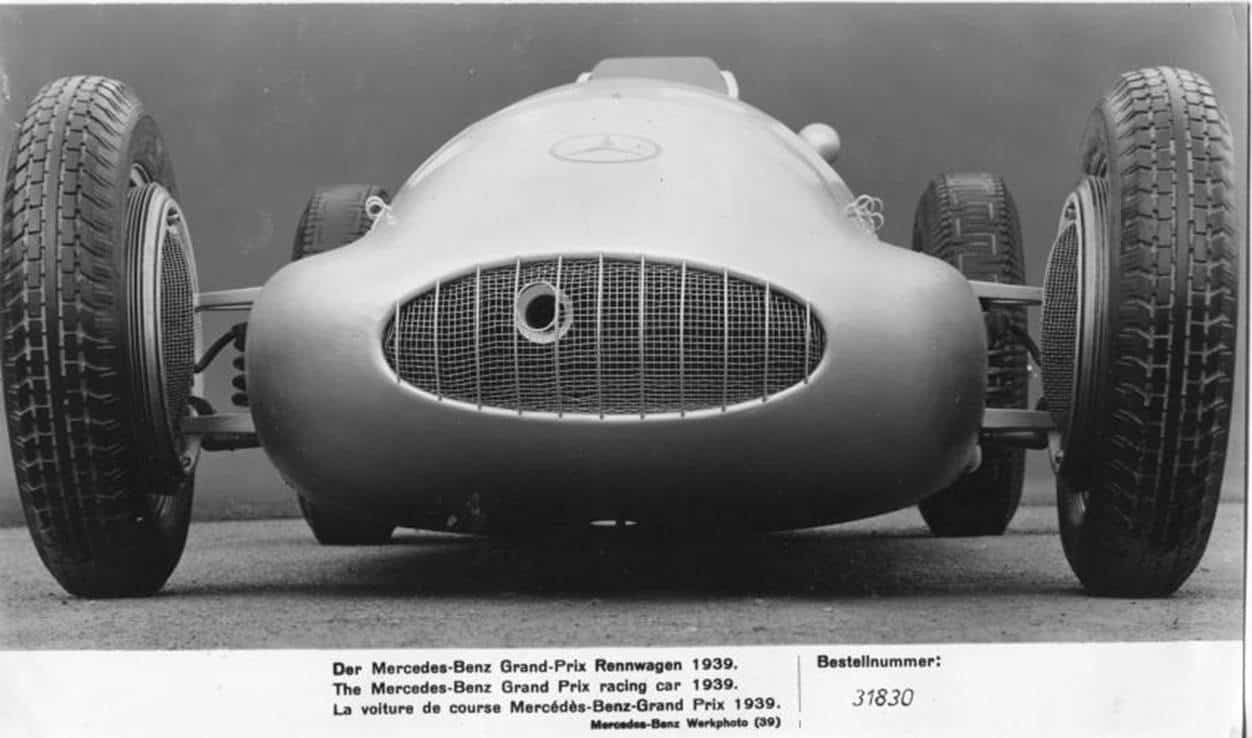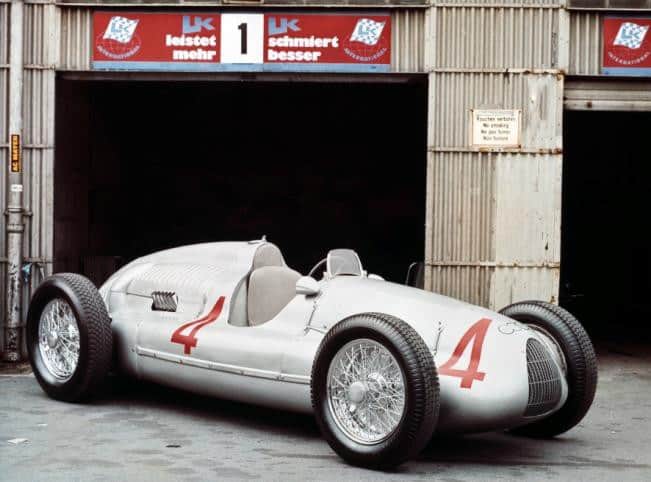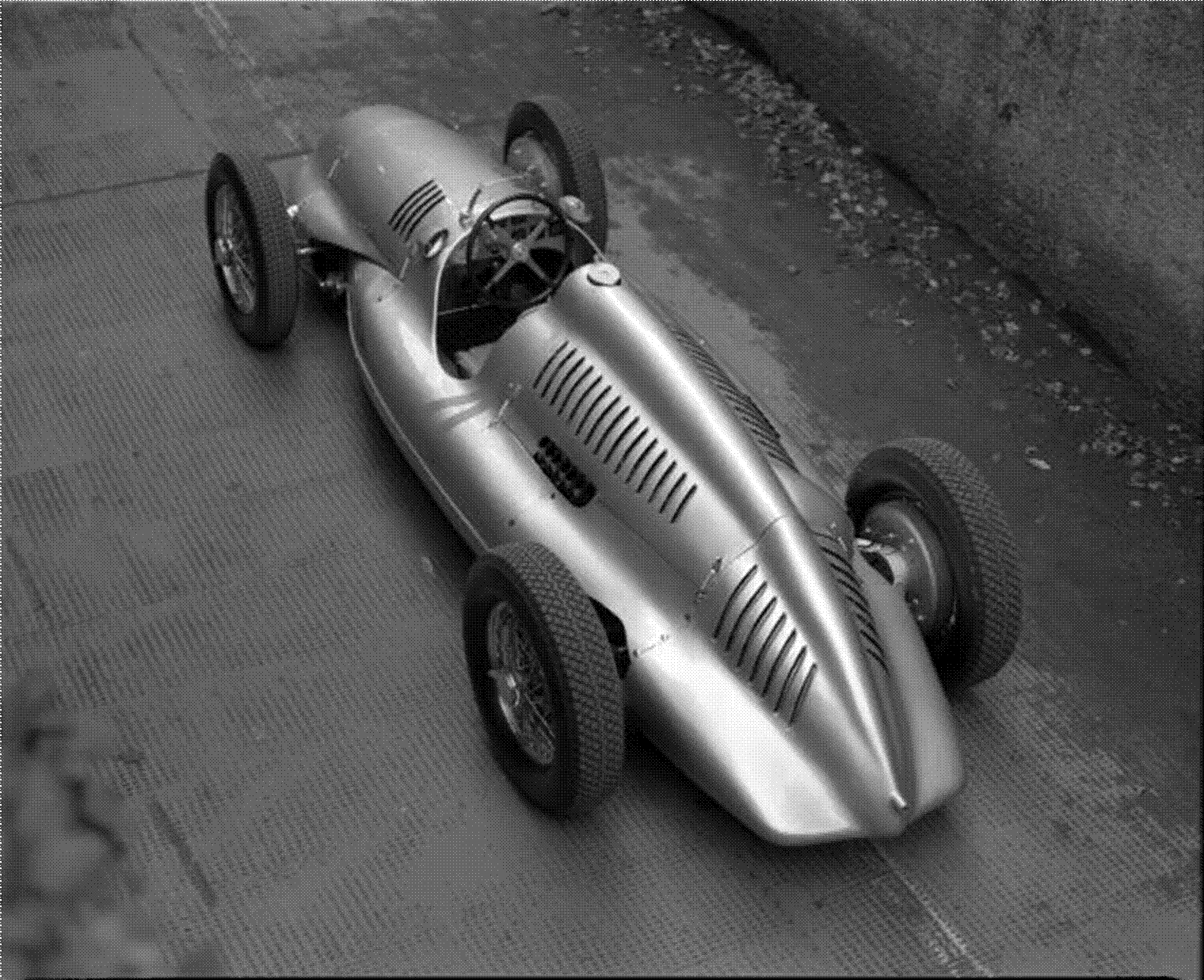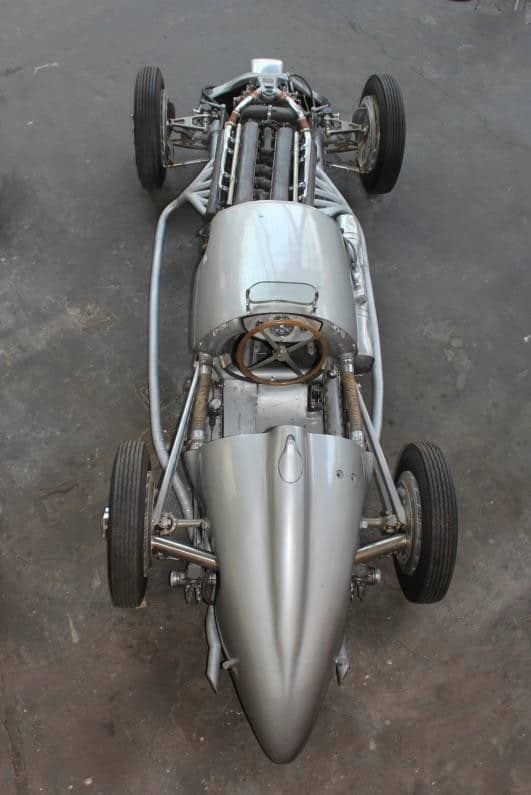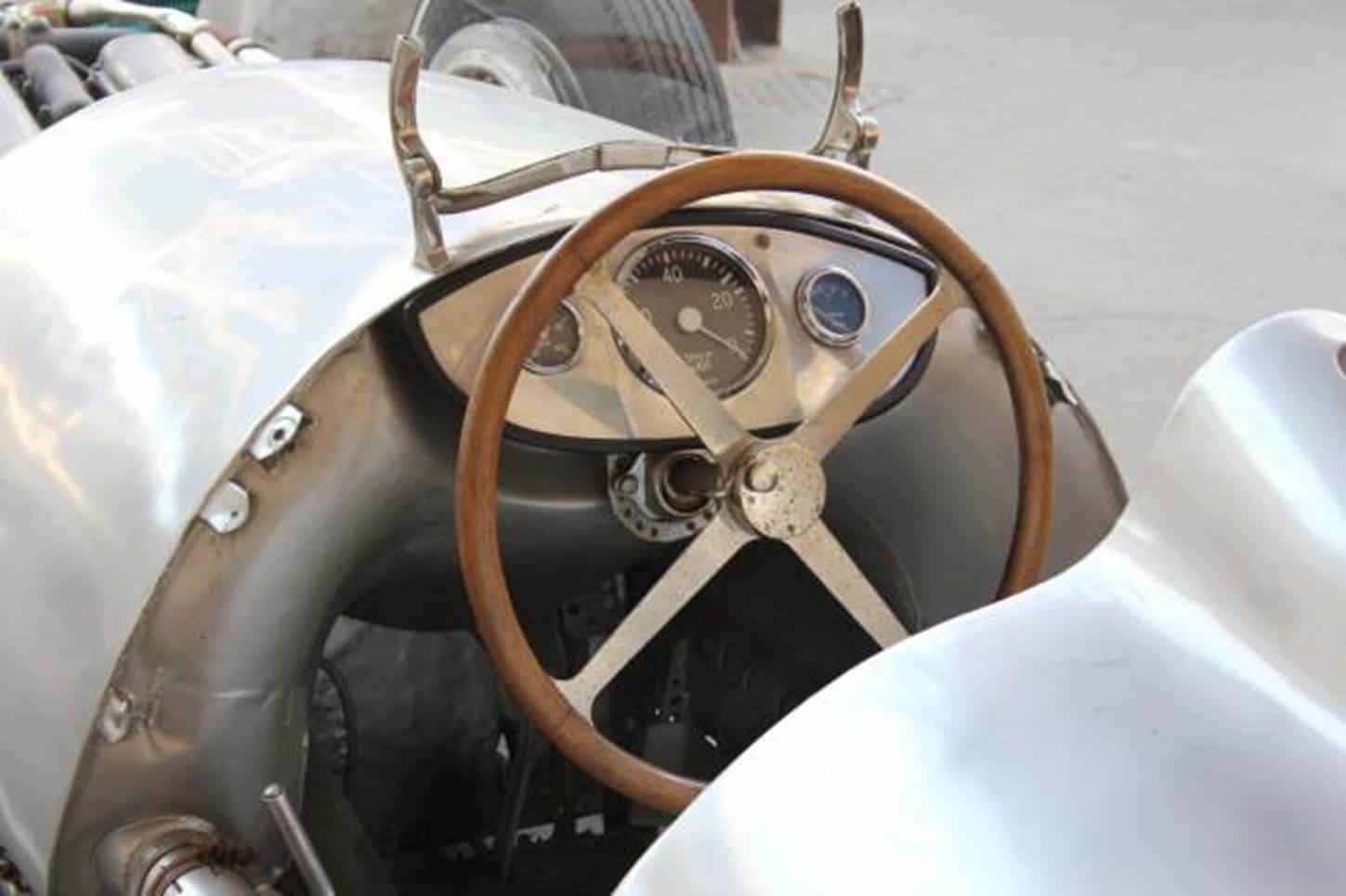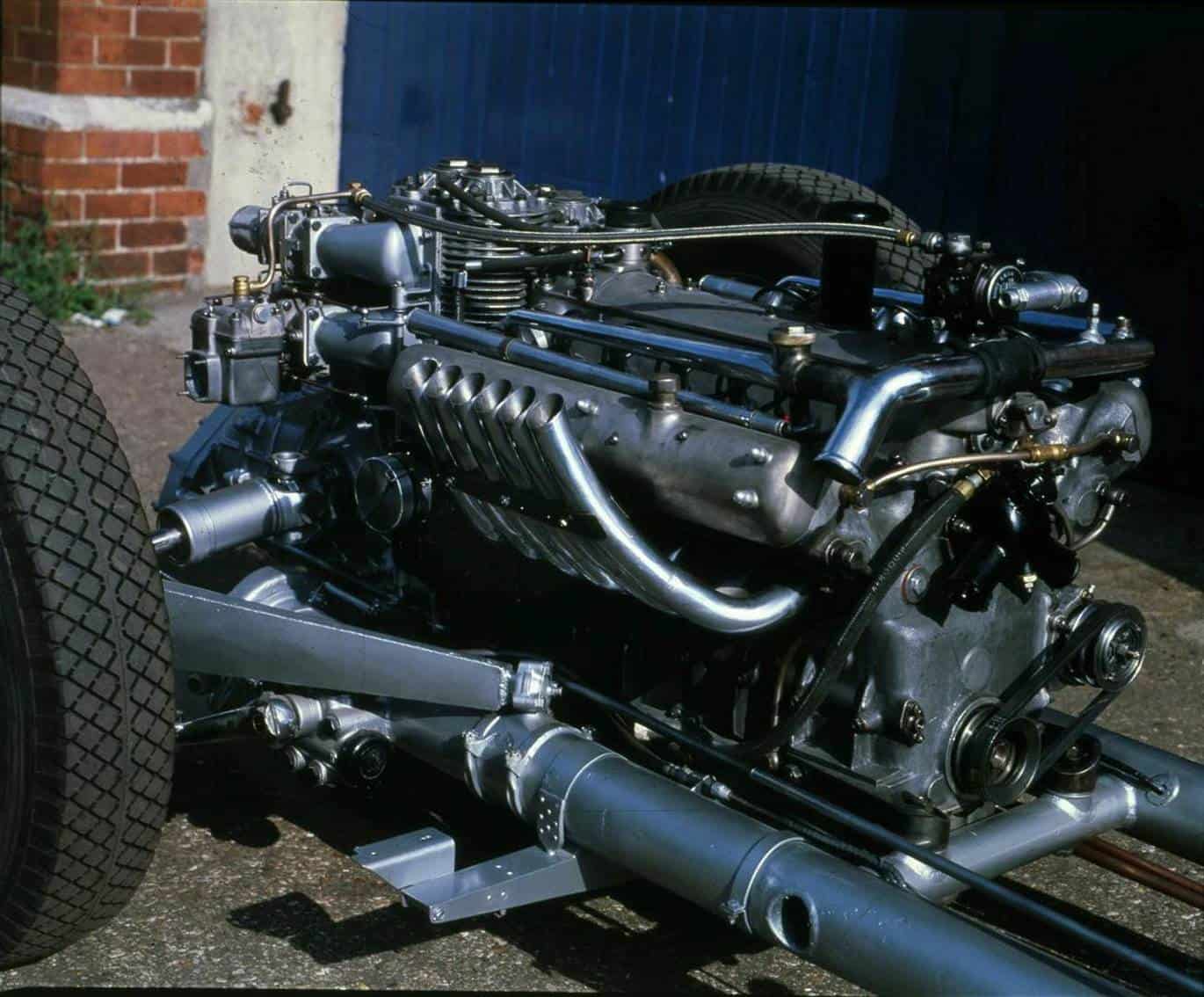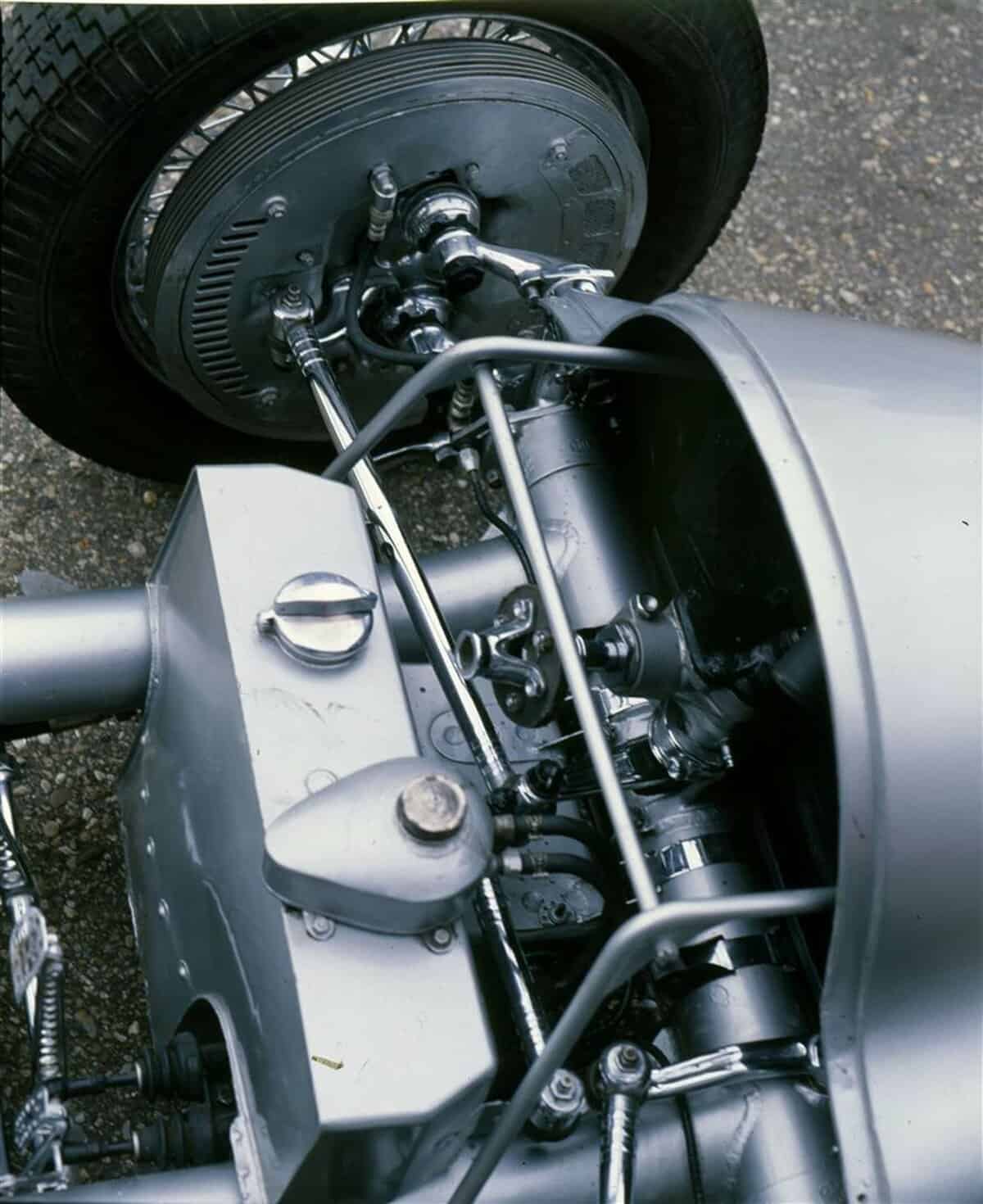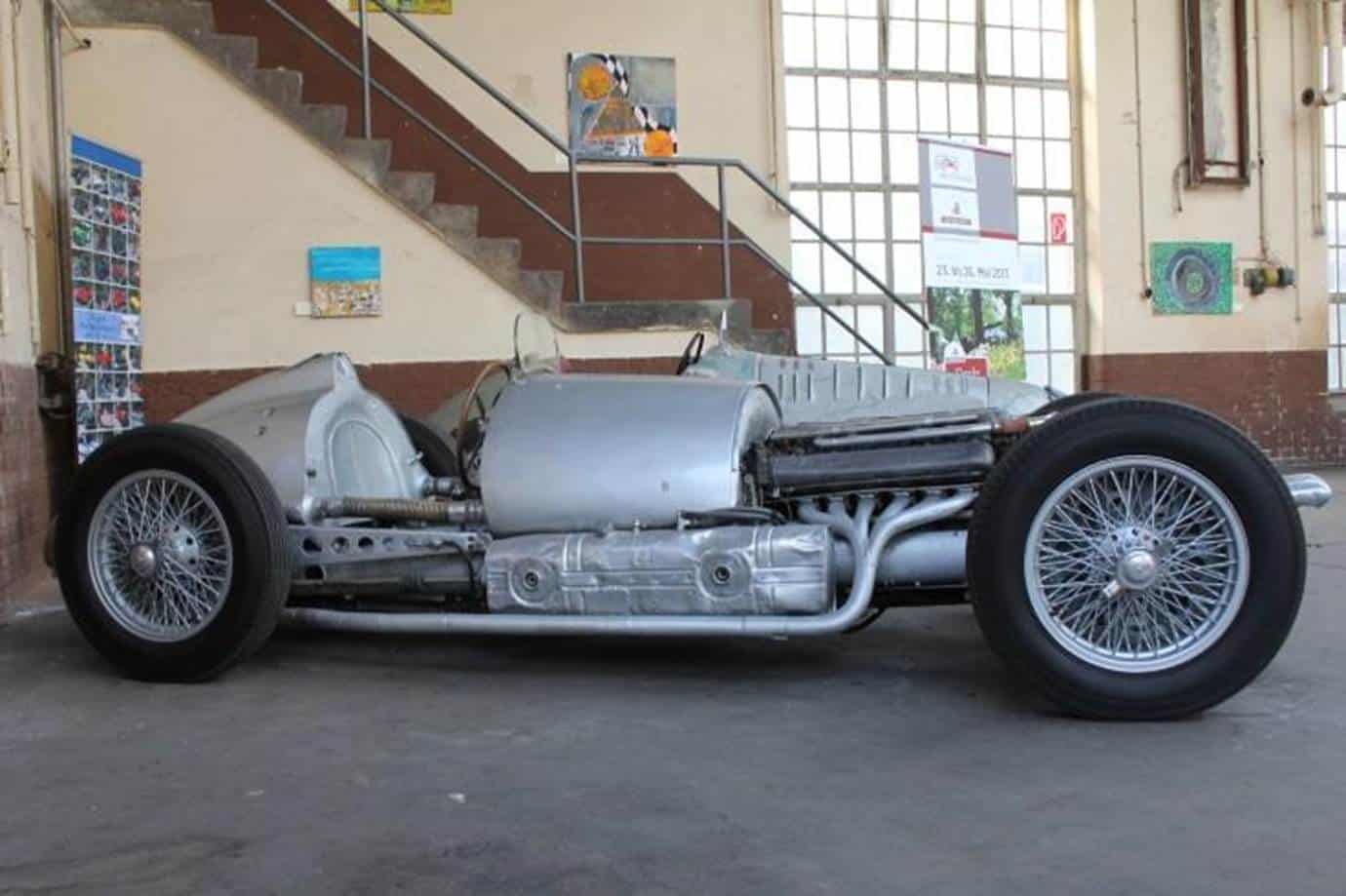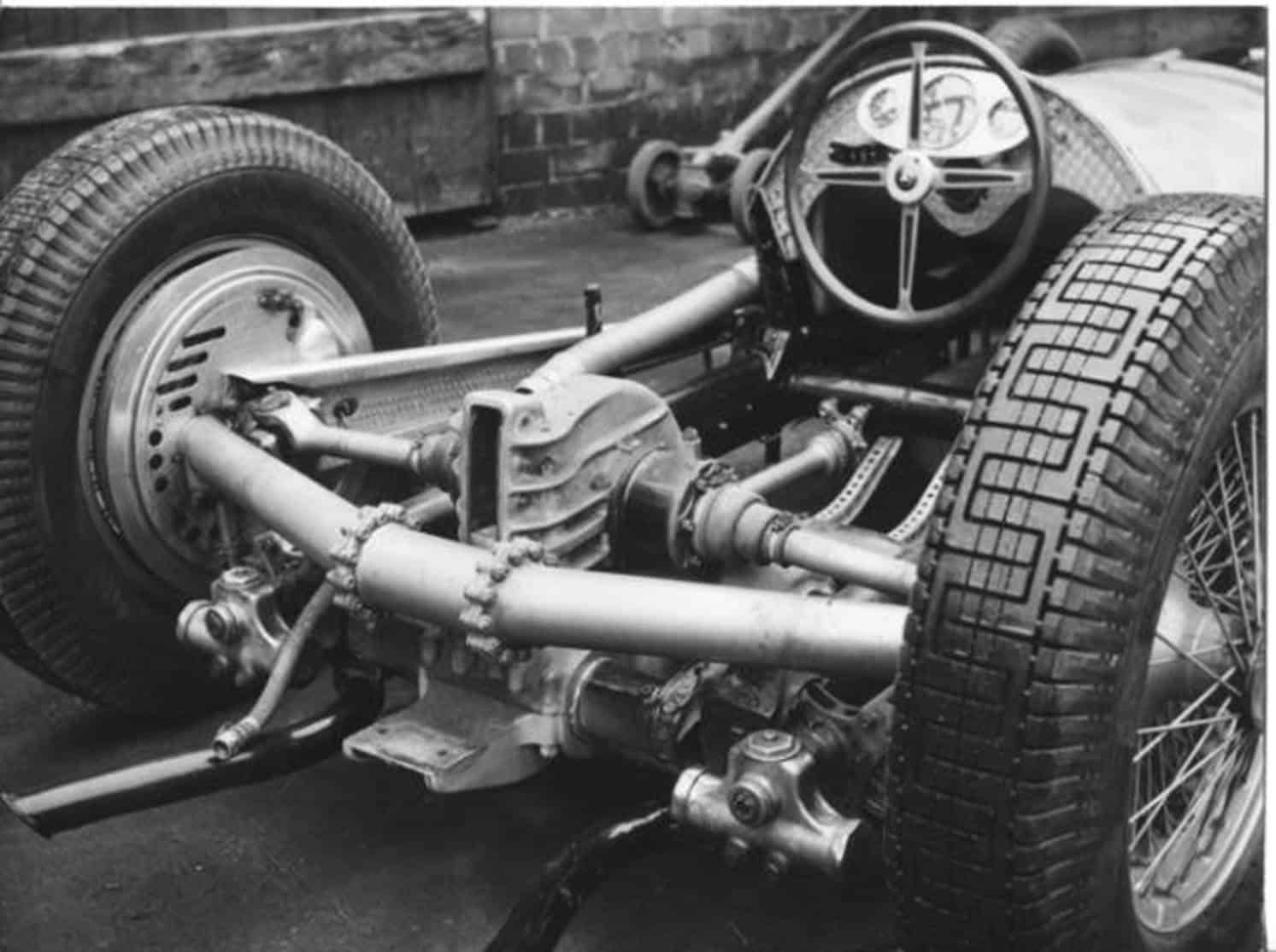Porsche vs. Uhlenhaut, Part 1
Revisiting the epic Mercedes-Benz W 154 and Auto Union Type D rivalry
BY: MARTIN SCHRÖDER
At the 2012 Goodwood Festival of Speed, enthusiastic spectators experienced the sight, sound, smell, and atmosphere of a prewar Grand Prix – a grand celebration of the 1939 Mercedes-Benz W 154 and Auto Union Type D and their designers, two of motorsport’s legendary geniuses, Ferdinand Porsche and Rudolph Uhlenhaut – yes, that Uhlenhaut, designer of the Mercedes 300 SLR coupé that just sold for a record price.
These important examples of the former rivals during the mythical Silver Arrows period, 1934 to 1939, were brought to England for a joint showcase thanks to Lord March, who brought the Mercedes-Benz and Auto Union teams to England, the country where Tazio Nuvolari won the last Donington Grand Prix prior to World War II.
Ferdinand Porsche’s name, of course, is widely celebrated. Even automotive aficionados, however, are often unaware that Porsche served as the chief technician at Daimler-Benz from 1923 to 1928, and, while there, designed such famous front-engined automobiles as the Mercedes S series, which reached a peak with the SSKL (below).
Rolling chassis of the SSKL, the highest development stage of the series designed by Ferdinand Porsche, which began with the Type K, followed by the Types S, SS, SSK.
The genius of Porsche is further illustrated in two examples. On October 12, 1932, the Porsche office, founded in December 1930, received news of the decision of the Sports Commission of the AIACR (International Association of Recognised Automobile Clubs) – forerunner of the FIA – on the racing formula for Grand Prix vehicles valid from 1934: maximum weight 750 kg without fuel, coolant, oil, and tires. For the rest, the designer had a free hand. Cubic capacity, supercharging, and fuel free! The challenge of this weight-focused formula, which was put into practice for the first time, was for the designer to achieve the optimum within this weight limit with the materials available at that time.
Porsche felt so inspired by the requirements that he and his partner/financier, Adolf Rosenberger, founded Hochleistungsfahrzeugbau GmbH (High Performance Vehicle Construction) on November 1, 1932, a company independent of the design office and headed by Adolf Rosenberger. On November 15, 1932, Porsche, Rosenberger, and chief designer Karl Rabe came together and recorded the “basic dimensions” of a Grand Prix car according to the new formula on a file card for the “Type R” – later Type 22.
On May 3, 1933, six months after the “basic dimensions,” Porsche filed a patent with the German Patent Office under the modest title “Chassis for a racing car,” from which I would like to quote a passage, since it is important for everything to follow, yes, still applying today. Like every great designer, Porsche was aware of the fact that – as the patent specification states, “…the doctrine of arranging the heavy masses of a vehicle around its overall centre of gravity is known in itself.” There would, however, be a passage that would be of significance for everything.
However, no vehicle would fully meet this requirement. The disadvantage inherent in the numerous Porsche designs based on this patent, namely being “tail spinners,” had been foreseen and is described marginally in the patent specification as follows: “The invention here accepts the disadvantage of not achieving the ideal driving characteristics. However, experience has confirmed that the resulting loss is negligible. But on the other hand, the essential progress has been achieved that a vehicle according to the invention always retains its driving characteristics to the same extent independent of the filling grade of its fuel tank.”
A look at the top view of the Auto Union Grand Prix car shows that the component arrangement is still valid today. Radiator, driver, tank, engine, differential, gearbox. The rolling chassis of the Auto Union Type C with the superimposed design drawing with the arrangement radiator, driver, tank, engine, differential, gearbox as with today’s GP vehicles.
Only the radiators moved to the sides in modern GP cars. The construction of the Type R was first named the “P Car” and later the “Auto Union” Grand Prix car.
At Mercedes, designer Hans Nibel decided in 1934 to use the front engine, which enabled the driver, sitting farther back, to better control the behavior of the car. This decision resulted in two serious disadvantages at the same time. First, the tank had to be placed behind the driver, with the consequence that the car with decreasing tank capacity became subsequently lighter during the race and, accordingly, tended to oversteer. The driver sat above the cardan shaft, shifting the center of gravity of the car upward.
Rudolf Uhlenhaut was appointed head of the racing department at the age of thirty after the sudden death of Hans Nibel in 1936. Uhlenhaut was the first race car designer who understood the Grand Prix car as a fully integrated system in which all components are interdependent. We are seeing this in Formula 1 today with the influence of the “tire” component. He came from the development of passenger cars and was entrusted with the construction of the later famous Type 170, the first Mercedes with an oval tube frame like the W 154.
Uhlenhaut was the father of the Mercedes W 125, the car that Rudolf Caracciola drove to victory in the 1937 European Championship, synonymous with winning today’s World Championship. Uhlenhaut recognized the disadvantage of the high seating position immediately and, as a countermeasure, installed the engine slightly inclined to the rear, as can be seen in this photo.
The engine in the W 125 is slightly inclined to the rear in order to achieve the low seating position for the driver and thus a low center of gravity for the vehicle.
Robert von Eberhorst is a name most nonexperts are likely unaware of – “Eberan,” as he was briefly called, was Porsche’s assistant who supervised the building of the Grand Prix cars in the racing workshop at Horch from 1933 to the end of 1937. After the expiration of the contract between the Auto Union AG and Ferdinand Porsche, Eberan was appointed chief designer, and the Auto Union Type D 1938–1939 is his work – still based, of course, on the patent for a “chassis for racing cars,” but featuring numerous innovations.
Let’s look at the two rival cars.
This is what the Mercedes Silver Arrow with the 1938 body looks like. Known as the W 154, its beauty and dynamics are unsurpassed.
The opening for the external starter motor is offset from the center due to the engine being installed obliquely in the longitudinal direction.
Looking at his competitor, the Auto Union Type D, Ferdinand Porsche’s stamp can be clearly seen. This photo of the Auto Union Type D was taken on August 12, 1979, in front of Box No. 1 of the old paddock at the Nürburgring. It was the first appearance of an Auto Union Grand Prix car at the Nürburgring since July 23, 1939, the last “Grosser Preis von Deutschland” prior to WWII.
Let’s compare the most significant design details of the Mercedes-Benz W 154 designed by Rudolf Uhlenhaut with the Porsche/Eberan Auto Union Type D. Just as from 2014 onward, Formula 1 cars must be reduced to 1.5-liter turbocharged engines; in 1938, companies that wanted to compete in the European Championship had to build cars to meet the new specifications. The new rules required engines to be reduced from the 750 kg capacity-free formula with their 6.0-liter engines to 3.0-liter engines with compressor or 4.5-liter engines without; additionally, the weight allowance was changed to a minimum of 850 kgs. With the exception of the French manufacturers Talbot and Delahaye, all companies opted for the 3.0-liter supercharged version.
Uhlenhaut and Mercedes remained with the front-engine, Eberan and Auto Union with the mid-engine. Uhlenhaut was aware of the design disadvantages of the front engine, but when he designed the new 3.0-liter formula, he was able to compensate for this with an enormous amount of technological effort. Recall the line in the patent specification that “…the doctrine of arranging the heavy masses of a vehicle concentrated around its overall centre of gravity is known per se.”
The Auto Union Type D configuration is similar to the W 154 with air intake for the front radiator (under the fairing), the driver’s seat next to the gear lever, and a tank with central filler neck and fully interacting side tanks. There was no change in the weight distribution front/rear with decreasing fuel quantity, the drivetrain consisting of engine, differential, and transmission.
The view from above of the Mercdes W 154 showed the engine installed diagonally to the left and the oil tank mounted to the right, and the low seating position of the driver due to the cardan shaft running left of the driver’s seat. In a front-engine car, the driver is sitting above the drive shaft, thus shifting the center of gravity upwards. By installing the engine diagonally, the drive shaft is running left of the driver and the seat is low on the floor of the car, similar to a go-kart.
The saddle tank is mounted above the driver’s legs to balance the car’s weight distribution.
This photo shows that the rear tank and the saddle tank are at the same height. During a partial filling, compressed air was used to fill the saddle tank. Even more important is the partial filling of the tanks: As can be seen clearly, the two tanks are about the same height. This means that the saddle tank above the driver’s legs is only full when the rear tank is completely full. To enable partial filling and at the same time the desired neutral weight distribution, Mercedes filled up with compressed air and transported the required quantity into the higher saddle tank. Hence the thick hoses to the right and left of the driver’s seat.
This photo shows another trick of Porsche’s construction: All components necessary for the suspension adjustment – today we call it set-up – from the trailing arms of the rear axle to the steering gear are connected to the frame by squeeze straps and can be adjusted in a few simple steps.
The steering gear fixed by squeezing straps, behind it the oil tank, laterally beveled to drain off the warm air, above the drop-shaped reservoir for the brake fluid.
Lateral warm air exhaust at the Auto Union Type D. The oil tank of the Auto Union is located in the front part of the car, of the Mercedes in the center on the right side, thus compensating the weight shift due to the engine installed diagonally to the left and the cardan shaft running to the left of the driver.
This photo of the W 154 shows the engine mounted slightly inclined to the rear, the oil tank on the side.
Uhlenhaut undoubtedly invested the greatest technological effort in the rear-axle guidance system.
The rear axle of the W 154 can be regarded as a technical work of art with good reason: (from left to right) the longitudinal guide, the drive shaft, the transaxle transmission with integrated differential, on the left under the steering wheel the cardan shaft, the split de Dion tube with the flanged middle section guided in the sliding block. Because of the problem of weight distribution, Mercedes moved the gearbox to the rear axle, transaxle, right from the start. If we stick to the rear axle and study the solution a little closer, we can see a classic De Dion axle with the longitudinal members on the right and left, the drive shafts, and the De Dion tube. The screwed-on center tube is guided in the so-called sliding block and gives the rear axle the lateral support. Since there was little space for the suspension, Mercedes could not avoid buying the license for the side-mounted torsion bars from their former chief technician.
The rear shock absorber with cooling fins and adjustment cylinders. Small lines run from the rear shock absorbers, and to the left of the seat there is a lever with which the driver could hydraulically adjust the rear shock absorbers when the tank was emptying.
Translated from German by Martin Schröder.
Top left: Ferdinand Porsche. Photo: Porsche Holding GmbH. Top right: Rudolf Uhlenhaut. Photo: Dalton Watson.
